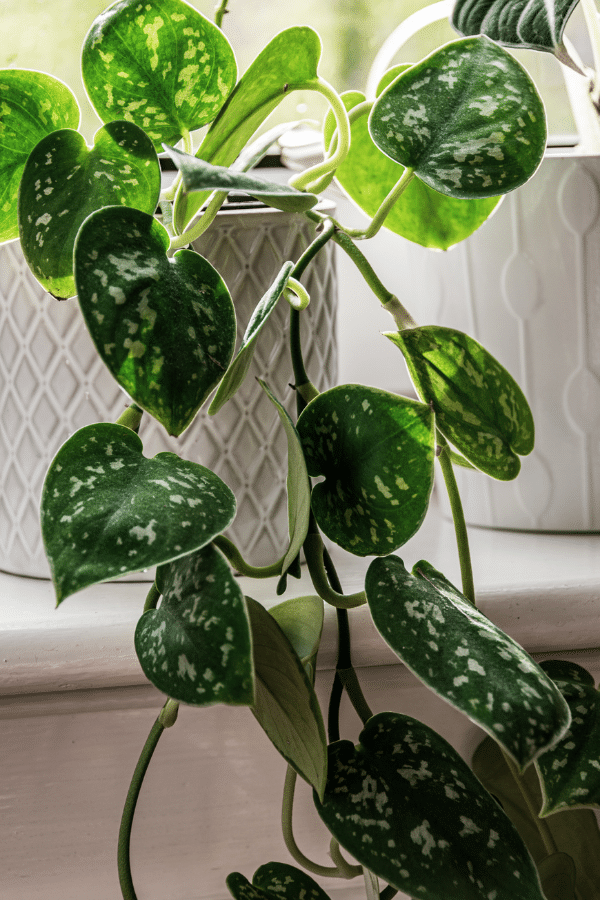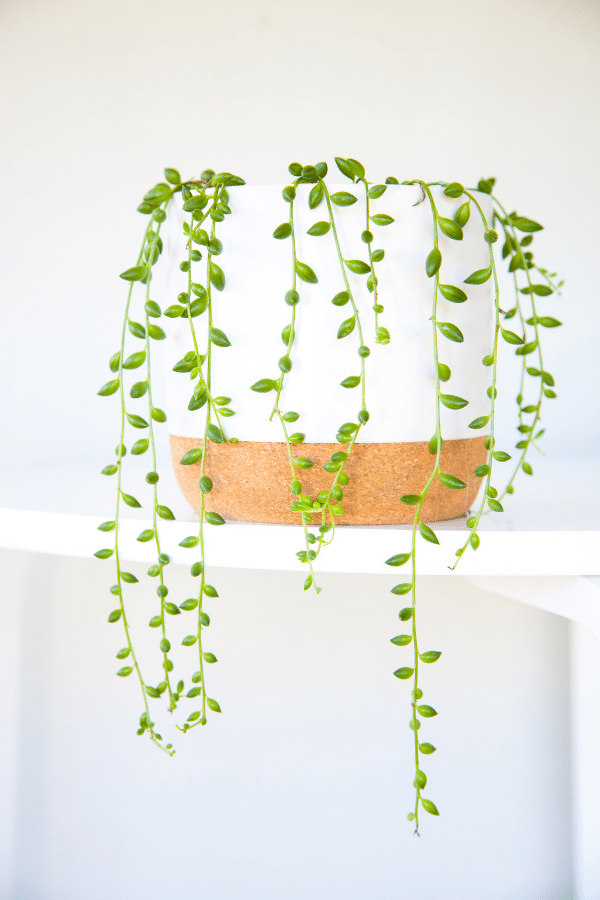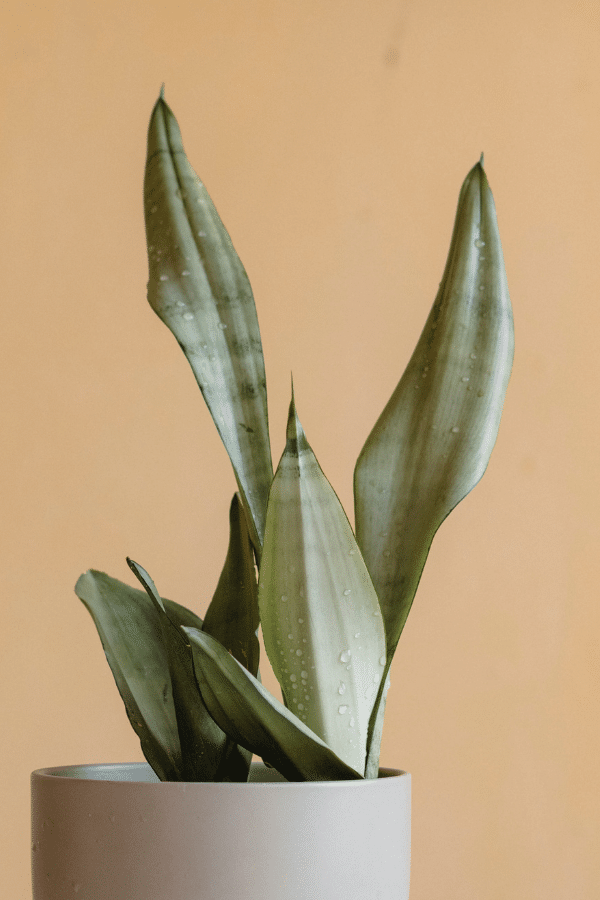Ric Rac Cactus
Scientific Name: Selenicereus Anthonynaus
Common Name: Ric Rac Cactus, Fishbone Cactus, Zig Zag Cactus
Ric Rac Cactus care is easy and a great houseplant for people just starting out! This plant won’t get much taller than two feet so a tabletop space for it is perfect.
To give this Cactus the best care, it requires a high-quality cactus/succulent soil, water only after the top inch of soil is dry, give it bright indirect sunlight, and high humid environments with temperatures ranging from 65-85F.
Quick Care Overview
| Common Name | Ric Rac Cactus, Fishbone Cactus, Zig Zag Cactus |
| Scientific Name | Selenicereus Anthonynaus |
| Family | Cactaceae |
| Origin | Southern Mexico |
| Growth Rate | Medium |
| Identification | Green waved stems that resemble fishbones |
| Height | Up to 2 feet tall |
| Soil | Cacti suited soil |
| Water | Water when top inch of soil is dry |
| Temperature | 65-85F |
| Sunlight | Bright indirect sunlight |
| Toxic to Cats & Dogs | No |
| Toxic to Humans | No |
| Pests | Mealybugs, scale, aphids |
| Diseases | Root rot |
Below we will dive deep into this Ric Rac Cactus care guide.
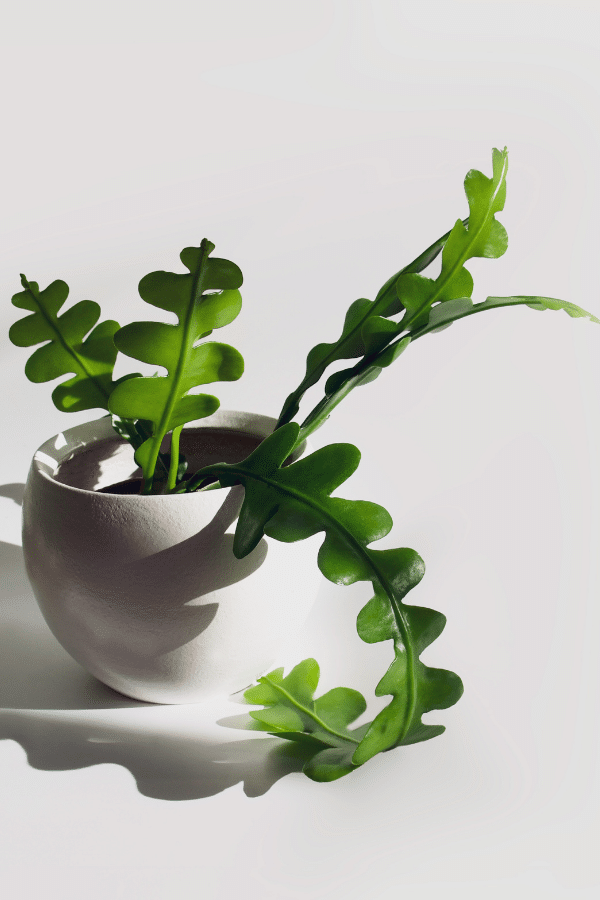
Ric Rac Cactus History
Southern Mexico native Selenicereus Anthonynaus, otherwise known as the Ric Rac Cactus, Fishbone Cactus, or Zig-Zag Cactus, is a gorgeous, popular plant with zigzag or fishbone appearing stems that look like leaves, as well as beautiful nocturnal flowers. Sometimes confused with the orchid cactus, which is a close look-alike, this plant occasionally is called Epiphyllum Anguilger. However, the former scientific name, Selenicereus Anthonynaus, is more commonly used. This plant is prized for its delicious edible fruits in Mexico.
Ric Rac Cactus Identification
Ric Rac Cactus features unusual, waved stems that resemble fish bones. Trailing stems create a full, leafy display. This plant has nocturnal flowers, ranging from white to pale yellow, and is very fragrant. Flowers will begin opening in autumn when grown under the right conditions and will turn to edible green fruits that are similar tasting to gooseberries.
Ric Rac Cactus Growth Facts
Fast-growing and easy to care for, this cactus is a fun and unique eye-grabber that is perfect for any plant owner.
How Big Does a Ric Rac Cactus Get?
This cactus will grow around 2 feet tall by 2 feet wide in its spread.
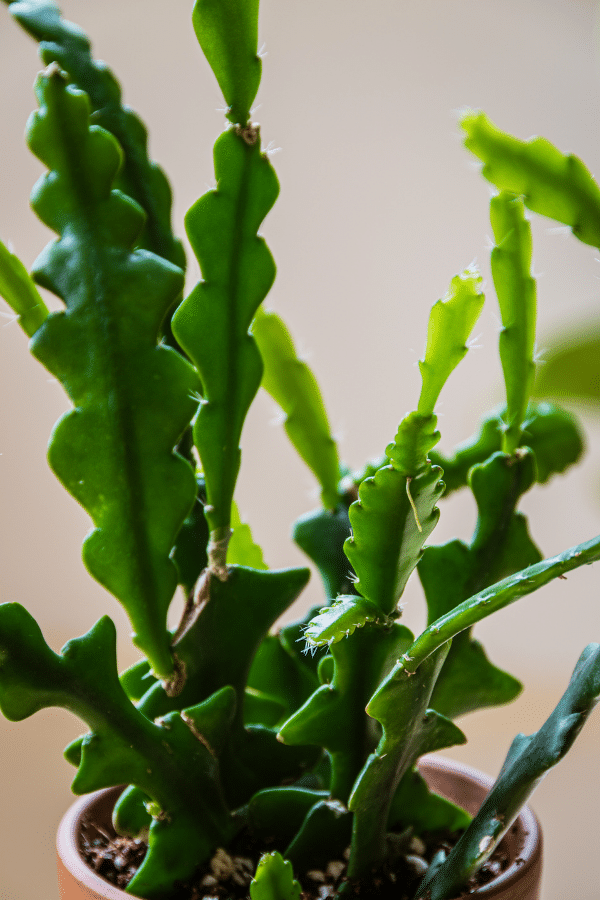
Ric Rac Cactus Care
This exotic-looking cactus is fast-growing and easy to care for.
Searching for a new houseplant?
Take our houseplant quiz to see what your next plant should be based on the room it’s in, the specific lighting the room receives, if you want it on the floor or on the table, and much more!
Ric Rac Cactus Soil
A selection of soil suited for cacti is helpful to avoid issues caused by overwatering. Any commercial cactus/succulent should do nicely. Coco coir, fine moss, or perlite may be incorporated to aid in creating the porous, well-draining, airy soil this cactus desires.
Ric Rac Cactus Fertilizer
While this cactus does not require much fertilization, a spring feeding of diluted liquid fertilizer indicated for cactuses or orchids is ideal. However, use fertilizer sparingly and be sure not to overfertilize, as this may lead to issues. In addition, these cacti should not be fed in fall or winter.
Ric Rac Cactus Watering
While drought-resistant to a certain degree, this cactus prefers to be watered slightly more often than the average cactus, as its natural habitat is the rainforest. The Ric Rac Cactus will enjoy a thorough soaking but should not be overwatered, as this may lead to root rot. Instead, this plant should be rewatered after the top inch of soil has dried out. The watering frequency may be reduced to every few weeks in the winter.
Ric Rac Cactus Light Requirements
Although classified as a cactus, this rainforest native prefers to have dappled light, such as when seen growing under a dense canopy of tropical trees in its natural habitat. Therefore, this cactus will enjoy bright indirect light such as from eastern or western windows when cultivated indoors. However, keep in mind that too much direct sunlight will damage this plant.
Ric Rac Cactus Temperature & Humidity
The Fishbone Cactus generally does well when grown in average household temperatures, between 65-85 degrees Fahrenheit. However, it is crucial that you do not allow your plant to be grown in temperatures below 50 degrees Fahrenheit, as this will cause severe damage. Due to its rainforest heritage, this cactus will appreciate being grown in higher humidity levels. Still, it will tolerate average household humidity levels. Humidity may be increased by adding a humidifier, adding a pebble tray, misting, or grouping with other plants closely.
Repotting Ric Rac Cactus
This cactus does not need to be repotted often. Every 2-3 years will likely be sufficient, depending on growing conditions. When repotting, repot in early spring and select a container with drainage holes that is only 1-2 inches larger in diameter. Refresh the soil in the new container, tamp lightly, water thoroughly, and place in indirect light.
Ric Rac Cactus Maintenance & Pruning
This cactus does not require pruning. However, discolored, dried-up, or diseased plant material may be removed periodically.
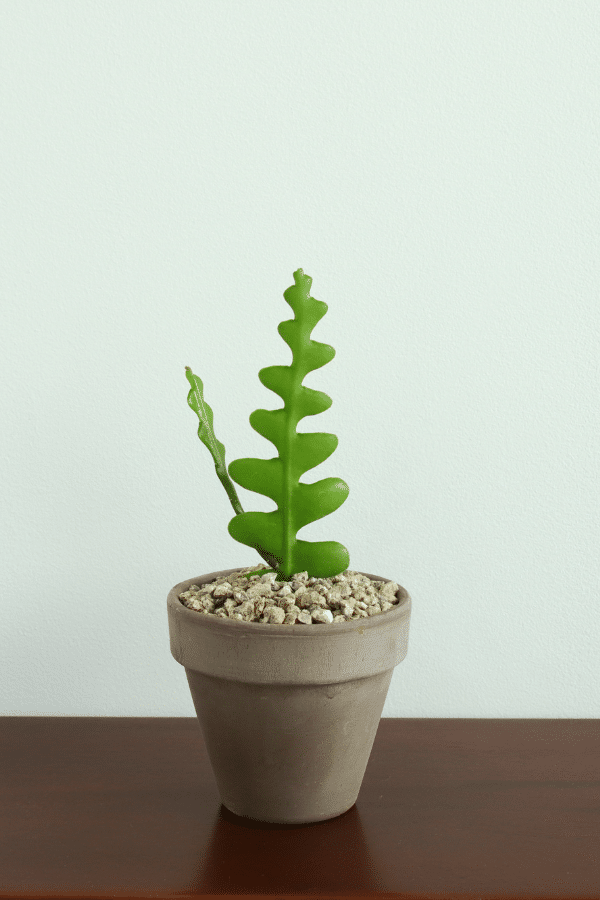
Ric Rac Cactus Propagation
Like many other succulents, propagating a Ric Rac Cactus is very easy. It may be done by taking cuttings and placing them in either soil or water. Simply pinch a piece of stem off that is a few inches long, let the stem callus for a day or two. Next, plant into well-draining soil and keep moist. Plant in indirect light. This cutting will grow into a new plant shortly. Alternatively, after taking a cutting, you may place it into a vial of water, only putting the bottom of the stem in the water and not submerging the entire cutting. Replenish the water as needed, and within a few days, you should see the cutting developing roots. After the roots have become 1 inch or so long, the cutting should be planted into a container filled with a well-draining soil mixture.
Ric Rac Cactus Toxicity
Ric Rac Cactus is non-toxic and pet-friendly!
Toxicity to Humans
This cactus is considered non-toxic to humans, and the fruits are edible, however, the Fishbone Cactus may not produce fruit when grown as a houseplant. The fruit of this plant is prized in Mexico and is said to taste similar to gooseberries.
Toxicity to Cats & Dogs
This plant is considered non-toxic to pets. However, the plant should not be consumed as it may cause digestive upset.
Ric Rac Cactus Problems
Ric Rac Cactus Leaves Turning Yellow
Ric Rac Cactus get yellow leaves because of a lack of water. Be sure to set a good watering schedule to provide the proper care to the Fishbone Cactus.
Ric Rac Cactus Leaves Turning Brown
Browning of leaves typically either indicates that your cactus is receiving too much sunlight or too much water. Provide bright but indirect light and be sure to let the soil dry out before rewatering.
Ric Rac Cactus Diseases
Like many other cacti, the Fishbone Cactus is largely disease resistant. The most common disease related issues that may occur with this plant are due to overwatering.
Ric Rac Cactus Pests
Like many other houseplants, the Ric Rac cactus is susceptible to scale, mealybugs, aphids, etc. If an infestation is noticed, wipe down your plant’s leaves, isolate the plant, and treat using a pesticide indicated for houseplants such as insecticidal soap. Ensure that you follow all label instructions.
FAQ
How Often Do Ric Rac Cactus Bloom?
Ric Rac Cactuses can bloom with pinkish white flowers. They can bloom in the spring time and the flowers don’t last all that long.
Why Is My Ric Rac Cactus Wrinkly?
The Ric Rac Cactus can become wrinkly if the plant is not receiving enough water. This plant likes to receive more water than the average cactus. Alternatively, it could be in direct sunlight, be sure to provide it with indirect light.

